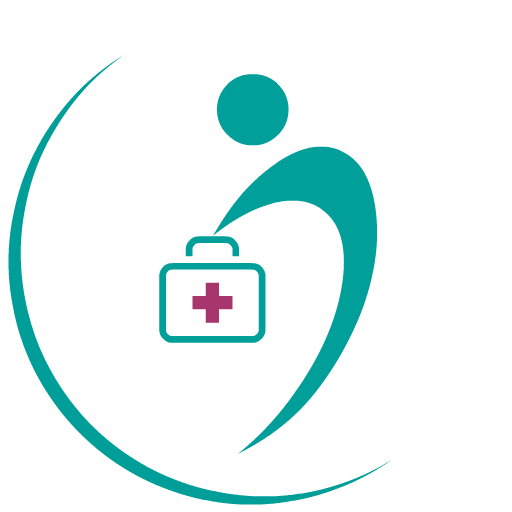If you're someone who frequently experiences headaches or migraines.
You understand just how debilitating they can be. These throbbing sensations can disrupt your daily activities and significantly impact your quality of life. Thankfully, there are various strategies you can implement to manage and alleviate these unwelcome visitors. In this article, we'll explore practical tips and techniques to help you find relief from common headaches or migraines.
Understanding the Types of Headaches
Before delving into effective management strategies, it's essential to differentiate between the various types of headaches. Understanding the root cause of your discomfort will help you tailor your approach to finding relief.
1. Tension Headaches
Tension headaches, a common affliction, often emerge as a result of various factors, most notably stress, anxiety, and poor posture. These types of headaches manifest as a persistent, dull ache that seems to grip both sides of the head, creating a sensation of discomfort that can become burdensome. One distinctive feature of tension headaches is their ability to extend beyond the cranial realm, often causing tension to radiate down the neck and shoulders, further adding to the overall sense of unease. The interconnected nature of these headaches is particularly interesting; they act as physical manifestations of the stress and anxiety that we encounter in our daily lives. When stress levels escalate, muscles in the head, neck, and shoulders tighten involuntarily, contributing to the characteristic discomfort associated with tension headaches. Moreover, poor posture, a common modern-day challenge due to prolonged periods of sitting and hunching over screens, can exacerbate these headaches by placing undue strain on the muscles and structures in the upper body. Managing tension headaches involves not only addressing their physical symptoms but also delving into the root causes—stress and posture. Implementing stress-reduction techniques, such as mindfulness, meditation, or even engaging in physical activities like yoga, can help alleviate the frequency and intensity of tension headaches. Similarly, adopting ergonomic practices and engaging in regular posture-improving exercises can significantly reduce the strain on muscles and consequently reduce the occurrence of these headaches. In a world where stress has become a ubiquitous companion, and our digital lives often dictate our physical postures, understanding tension headaches and taking proactive measures to manage them is crucial for maintaining our overall well-being. By addressing the sources of stress, practicing good posture, and incorporating relaxation techniques into our routines, we can gradually relieve ourselves from the grip of tension headaches and experience the relief and freedom that come with a more comfortable existence.
2. Migraines
Migraines are intense headaches accompanied by symptoms such as nausea, sensitivity to light and sound, and visual disturbances. They can last for hours or even days, significantly affecting your ability to function.
3. Cluster Headaches
Cluster headaches, though less prevalent, stand as a testament to the astonishing complexity of human physiology. These distinctive headaches are characterized by their excruciating intensity and their remarkable pattern of occurrence. Unlike other types of headaches, cluster headaches manifest in cyclical bouts, striking with an unforgiving regularity at roughly the same time each day during their active phase. The term "cluster" accurately captures the nature of these headaches, as they tend to appear in groups or clusters over a period of weeks or months, only to subside and go into remission for a considerable period. When they do strike, the pain is nothing short of excruciating, often driving sufferers to seek immediate relief. The pain is commonly localized to one side of the head, frequently around the eye, and can radiate to the temple, cheek, and even the neck. This specific pattern of pain has led many to dub cluster headaches as "suicide headaches" due to their intensity. The underlying cause of cluster headaches remains somewhat enigmatic, although they are believed to be linked to the hypothalamus—the part of the brain that governs our body's internal clock. The exact triggers vary from person to person, but common factors include changes in sleep patterns, alcohol consumption, and certain foods. While the intensity and frequency of cluster headaches can make them exceptionally challenging to manage, treatments do exist to provide relief. Oxygen therapy, sumatriptan injections, and preventive medications can help mitigate the severity of the pain and reduce the frequency of clusters. It's essential for individuals who suspect they are experiencing cluster headaches to seek medical guidance for an accurate diagnosis and tailored treatment plan. In the intricate realm of headaches, cluster headaches stand as a perplexing yet important area of study, underscoring the depth of the human experience and the complexities of the brain. Through ongoing research and advancements in medical understanding, we continue to inch closer to unraveling the mysteries surrounding these intense episodes, offering hope for those who grapple with their challenging grip.
Lifestyle Changes for Headache Prevention
Prevention is key when it comes to managing headaches. Making some simple lifestyle adjustments can go a long way in reducing their frequency and severity.
4. Prioritize Sleep
Ensuring that you receive an adequate and restful night's sleep is an essential component of maintaining overall well-being and effectively managing the various demands of modern life. The benefits of quality sleep are far-reaching, from enhancing cognitive function and mood regulation to bolstering physical health. To unlock these benefits, it's crucial to not only prioritize sleep but also establish a consistent sleep routine that promotes optimal sleep quality. One pivotal step towards achieving this goal is crafting a structured sleep schedule. By going to bed and waking up at the same times each day, you synchronize your body's internal clock, known as the circadian rhythm. This synchronization can lead to more restorative sleep, as your body becomes attuned to a predictable sleep-wake cycle. This consistency extends even to weekends, helping to avoid the disruption that irregular sleep patterns can cause. Complementing a fixed sleep schedule, a relaxing bedtime routine can prove immensely beneficial. Engaging in calming activities before bedtime signals to your body that it's time to wind down. Activities such as reading a book, practicing gentle stretching or yoga, or enjoying a soothing cup of herbal tea can set the stage for a peaceful transition from wakefulness to sleep. The goal is to create an environment conducive to relaxation, which in turn facilitates the onset of sleep. In the midst of our fast-paced lives, it's tempting to sacrifice sleep for various commitments. However, this compromise can lead to a cascade of negative effects on both physical and mental well-being. Prioritizing sleep by adhering to a consistent sleep schedule and establishing a calming bedtime routine can be transformative. As you commit to these practices, you'll find that not only does your sleep quality improve, but your days become more productive, your mood more stable, and your ability to navigate challenges more resilient. By investing in your sleep, you're investing in a healthier, happier you.
5. Stay Hydrated
Dehydration can trigger headaches, so drink an adequate amount of water throughout the day. Aim for at least eight glasses.
6. Manage Stress
Stress, the ubiquitous companion of modern life, can often serve as a potent trigger for the onset of headaches. The intricate relationship between stress and headaches underscores the importance of adopting proactive measures to manage stress effectively. By integrating stress-reduction techniques into your daily routine, you can significantly diminish the frequency and intensity of headaches. One approach to tackling stress is the practice of deep breathing. This simple yet powerful technique involves taking deliberate, slow breaths that engage your diaphragm. Deep breathing triggers the body's relaxation response, which counteracts the physiological effects of stress. By dedicating a few moments each day to deep breathing exercises, you can create a buffer against the tension that often precipitates headaches. Meditation, another valuable tool, offers a means of quieting the mind and cultivating inner peace. Regular meditation sessions enable you to detach from the incessant demands of daily life, providing a mental sanctuary from stressors. Even dedicating as little as ten minutes a day to meditation can yield remarkable benefits, including reduced stress levels and a diminished propensity for headaches. Incorporating yoga into your routine presents yet another avenue for stress management. The marriage of physical postures, breath control, and mindfulness in yoga can foster relaxation and mental clarity. Yoga's gentle movements and deliberate stretches help release physical tension while its meditative aspect aids in calming the mind. Engaging in regular yoga sessions provides a holistic approach to addressing stress-induced headaches. The modern world may continue to swirl with its frenetic pace, but by embracing stress-reduction techniques, you can create an oasis of tranquility amidst the chaos. Deep breathing, meditation, and yoga are not just fleeting remedies; they are potent tools that empower you to regain control over your stress response. As you navigate life's challenges with a newfound sense of calm, you'll find that headaches gradually lose their grip, leaving you free to savor the moments with a clear and unburdened mind.
Effective Strategies for Headache
Relief When a headache strikes, it's essential to have tools at your disposal to alleviate the pain and discomfort.
7. Over-the-Counter Pain Relievers
For mild to moderate headaches, over-the-counter pain relievers like ibuprofen or aspirin can provide quick relief.
8. Apply Cold Compresses
Placing a cold compress on your forehead or the back of your neck can help constrict blood vessels and alleviate pain.
9. Try Acupressure
Applying pressure to specific points on your body, such as the space between your thumb and forefinger, can help relieve tension. Seeking Professional Help If your headaches or migraines persist or worsen, it's crucial to consult a healthcare professional.
10. Consult a Doctor
If your headaches are severe, frequent, or accompanied by other symptoms, schedule an appointment with a doctor to rule out underlying causes.
11. Consider Chiropractic Care
Chiropractic adjustments can be beneficial, especially if your headaches stem from neck or spine issues.
12. Explore Alternative Therapies
Techniques like acupuncture and biofeedback have shown promise in alleviating headache pain for some individuals.
Conclusion
Managing and alleviating common headaches or migraines requires a multi-faceted approach that includes lifestyle changes, relief strategies, and professional guidance. By understanding the type of headache you experience and implementing the appropriate techniques, you can regain control over your life and reduce the impact of these unwelcome visitors.
FAQs
1. Can certain foods trigger headaches?
Absolutely, certain foods like processed meats, aged cheeses, and foods containing MSG can trigger headaches in susceptible individuals.
2. Is exercise beneficial for headache management?
Yes, regular exercise can help reduce the frequency and severity of headaches by promoting overall well-being and reducing stress.
3. How do I know if my headaches are migraines?
Migraines are often accompanied by specific symptoms like aura, nausea, and sensitivity to light. Consult a doctor for a proper diagnosis.
4. Are there natural remedies for headaches?
Yes, some natural remedies like peppermint oil, ginger tea, and lavender aromatherapy have shown potential in alleviating headache symptoms.
5. Can dehydration cause migraines?
Dehydration can be a trigger for migraines in some individuals. Staying hydrated is crucial for headache prevention.
Blogs
Stay connected to health experts and read what they have to say via DocSmart.
Please sign up to create your own blog





